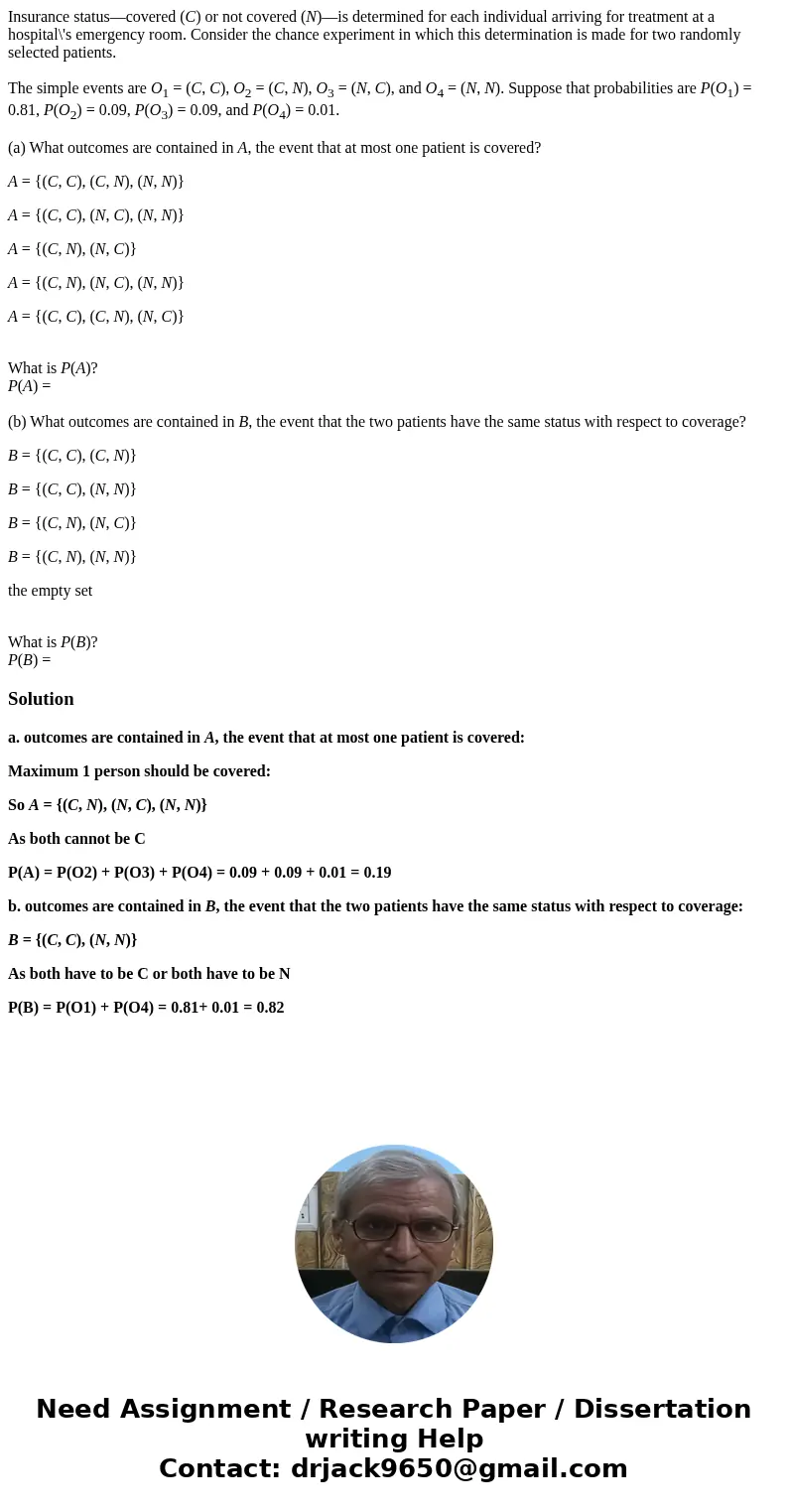Insurance statuscovered C or not covered Nis determined for
Insurance status—covered (C) or not covered (N)—is determined for each individual arriving for treatment at a hospital\'s emergency room. Consider the chance experiment in which this determination is made for two randomly selected patients.
The simple events are O1 = (C, C), O2 = (C, N), O3 = (N, C), and O4 = (N, N). Suppose that probabilities are P(O1) = 0.81, P(O2) = 0.09, P(O3) = 0.09, and P(O4) = 0.01.
(a) What outcomes are contained in A, the event that at most one patient is covered?
A = {(C, C), (C, N), (N, N)}
A = {(C, C), (N, C), (N, N)}
A = {(C, N), (N, C)}
A = {(C, N), (N, C), (N, N)}
A = {(C, C), (C, N), (N, C)}
What is P(A)?
P(A) =
(b) What outcomes are contained in B, the event that the two patients have the same status with respect to coverage?
B = {(C, C), (C, N)}
B = {(C, C), (N, N)}
B = {(C, N), (N, C)}
B = {(C, N), (N, N)}
the empty set
What is P(B)?
P(B) =
Solution
a. outcomes are contained in A, the event that at most one patient is covered:
Maximum 1 person should be covered:
So A = {(C, N), (N, C), (N, N)}
As both cannot be C
P(A) = P(O2) + P(O3) + P(O4) = 0.09 + 0.09 + 0.01 = 0.19
b. outcomes are contained in B, the event that the two patients have the same status with respect to coverage:
B = {(C, C), (N, N)}
As both have to be C or both have to be N
P(B) = P(O1) + P(O4) = 0.81+ 0.01 = 0.82

 Homework Sourse
Homework Sourse